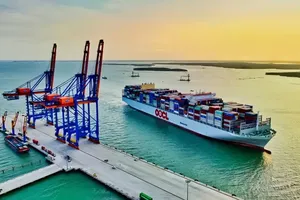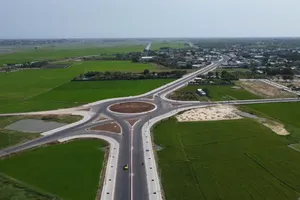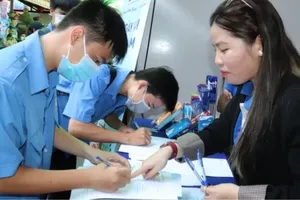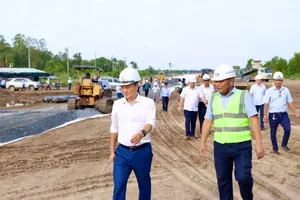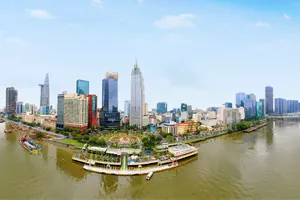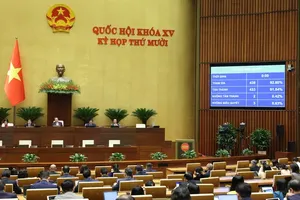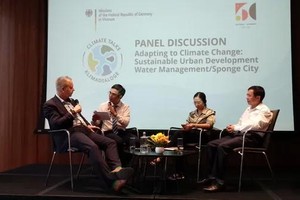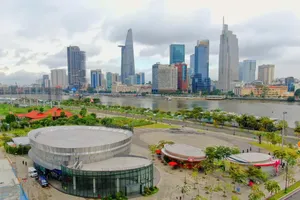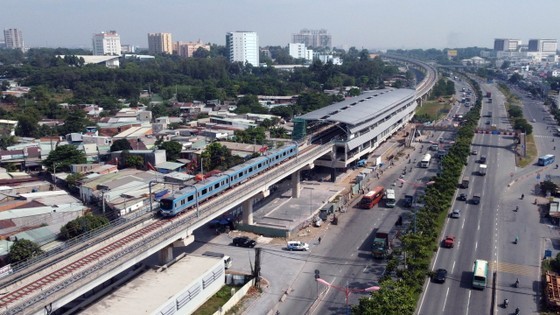 |
Metro route No.1 (Ben Thanh – Suoi Tien) is under construction (Photo: SGGP) |
Named ‘Conclusion 49 and Resolution 98 – Opportunities and Challenges for HCMC Urban Railway’, the discussion began with the speech of MAUR’s Vice Head Nguyen Quoc Hien, clearly presenting Conclusion No.49-KL/TW by the Politburo about the development orientation of Vietnamese railway transport until 2030, with a vision to 2045 (Conclusion 49).
He stresses the determination to complete the urban railway network in HCMC by 2035. In the next 12 years, HCMC must finish its railway of 200km long, not to mention additional routes into the upcoming master planning to better suit the growth of the city.
Observing the directions of HCMC People’s Committee, MAUR is going to cooperate with HFIC, HIDS, and relevant state departments and agencies to form a task force, led by the Chairman of HCMC People’s Committee, in order to create a project to carry out Conclusion 49. This project aims at accelerating the process to seek necessary capital, to prepare for investments, to approve corresponding projects, and to monitor construction progress. It will be reported to the Politburo and the National Assembly as a foundation to quickly fulfill the goals in Conclusion 49 regarding the city’s railway line.
MAUR voiced that to complete the above goals, HCMC should urgently speed up land clearance and compensation distribution tasks for the urban railway projects. The land retrieval for these projects must be done simultaneously with the one for Transit-Oriented Development (TOD) planning, right when a project is approved. Meanwhile, it is necessary to devise suitable standards, technological solutions and to provide construction supplies, equipment for those projects. More importantly, by 2028, a capital of US$25 billion must be successfully arranged.
Statistics show that HCMC can only build about 1km of metro each year. Therefore, to accelerate this progress, the city needs to mobilize financial resources, update its planning, retrieve essential land, reduce the time to complete procedures for project investment, approval, and launching, decrease the time to supply materials and equipment, as well as building time.
MAUR also proposed a special mechanism to reduce the time for project approval, to decentralize power of approving urban railway projects from the Central Government to HCMC, to combine projects of unfinished routes into one or two only, and to organize construction vertically. It is essential to form common technology standards for the whole system, to devise new measures for project management, material and machine purchasing, construction organization.
Other participants in the discussion voiced their ideas on planning, land clearance and retrieval, land resource exploitation under the TOD model to have more finance, bond and commercial loans, procedures for investment and project approval, technological standards and solutions, material provision and construction organization, management models, and human resources.
Director of the Research Center for Transport under Viet Duc University Vu Anh Tuan stated that the TOD model should become the major for urban development as it can increase the effectiveness of land resource and public facilities exploitation, reduce traffic congestion and environment pollution by fully taking advantage of the space and land around metro stations.
The TOD model can attract the participation of various economic sectors in developing urban areas surrounding stations of the urban railway network, which is extremely suitable for HCMC. The implementation of this model when constructing new railway routes is a core solution to bring about surplus finance while modernizing the whole urban structure at the same time. Resolution 98 has given more ways for HCMC to successfully apply this model.
Dr. Tran Du Lich – member of the National Financial – Monetary Policy Advisory Council – insisted on an extremely strong determination of HCMC to complete its metro system by 2035 to fulfill the goals in Conclusion 49. MAUR should urgently cooperate with construction units to review and update each metro route planning before developing specific projects. The applied technologies must be consistent among the routes. The use of ODA capital depending on technology and construction progress like now is not at all suitable, and diversifying capital sources is more advisable to have more choices in these matters.
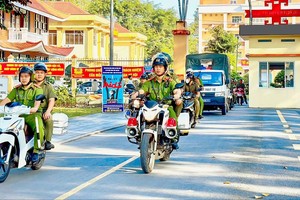
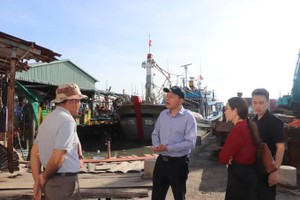
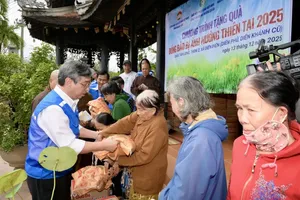

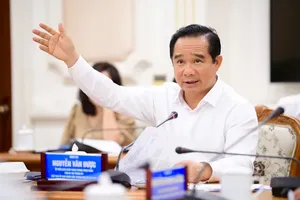
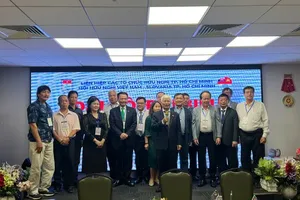
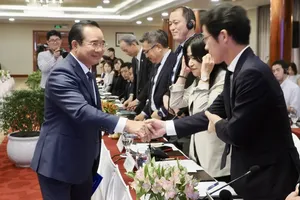
)
